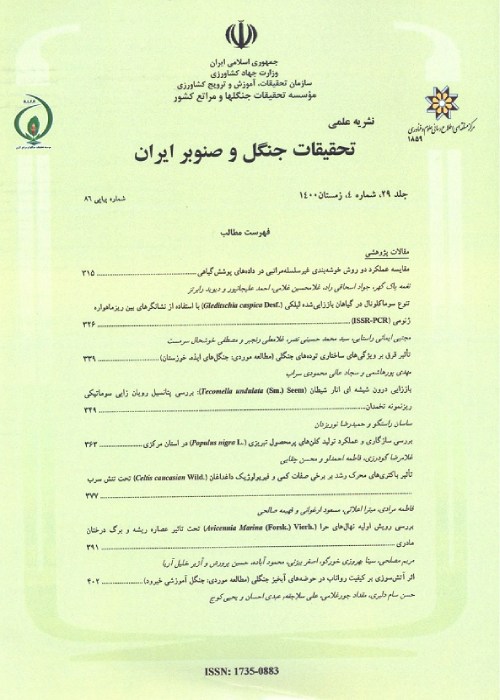The effect of willow (Salix alba L.) and garlic (Allium sativum L.) extracts on rooting of cuttings and nematode density in some Rosaceae species of Hyrcanian forests, Iran
Botanical gardens play a pivotal role in preserving native species, a challenging task in the autumn season when identifying leafless plants, particularly in the rose family (Rosaceae), becomes challenging. Propagation through cuttings offers a solution to maintain plant diversity. However, in humid climates, the main hurdle in plant propagation is combating pests and diseases. This research aimed to explore similar bases of Rosaceae wild species as rootstocks through cutting propagation, coupled with nematode control.
Conducted in the nursery section of Nowshahr Botanical Garden, Iran, from autumn 2019 to March 2021, this research employed a four-factorial experiment using a completely randomized design on four Rosaceae species: forest apple (Malus orientalis Uglitzk. ex Juz.), Mazanderani pear (Pyrus mazanderanica Schonb.-Tem.), prickly forest plum (Prunus spinosa L.), and thornless forest plum (P. divaricata Ledeb.). Factors included dipping cuttings in willow extract (zero, five seconds, and 24 hours) and feeding cuttings with a nutrient solution containing garlic extract (zero, 10%, and 20%). Cuttings were sourced from Rosaceae species in Hyrcanian forests. Willow extract, derived from one-year-old willow tree branches (Salix alba L.), and garlic extract from garlic species (Allium sativum L.) scales were utilized. Changes in nematode populations were monitored through soil and root sampling every 5 months for 18 months, with microscopic observations determining nematode infestation of Meloidogyne sp. and Pratylenchus sp. species.
Significant differences were observed among species concerning root formation, vegetative bud growth in cuttings, egg mass nematode density in one gram of root, and nematode density in 200 grams of soil. In forest apple, the 24-hour treatment of cutting tip dip in willow extract yielded the highest number of sprouts, roots, and fresh root weight. The lowest nematode density was recorded at 20% garlic extract. For Mazandarani pear, the 24-hour willow extract treatment resulted in the highest wet and dry root weights. Prickly and thornless forest plums exhibited optimal growth in the 24-hour willow extract treatment. Interaction effects of willow and garlic extracts on nematode populations in soil indicated the lowest density in 20% garlic extract with a 24-hour willow extract soak for forest plum species.
Willow and garlic extracts proved effective in stimulating rooting in cuttings and soil disinfection, enhancing rooting and soil health by reducing nematode contamination. Thornless plum species exhibited the highest root formation and vegetative growth with minimal nematode contamination. Conversely, forest apple and Mazandarani pear did not exhibit a significant response to the interaction effects of plant extracts.
- حق عضویت دریافتی صرف حمایت از نشریات عضو و نگهداری، تکمیل و توسعه مگیران میشود.
- پرداخت حق اشتراک و دانلود مقالات اجازه بازنشر آن در سایر رسانههای چاپی و دیجیتال را به کاربر نمیدهد.




